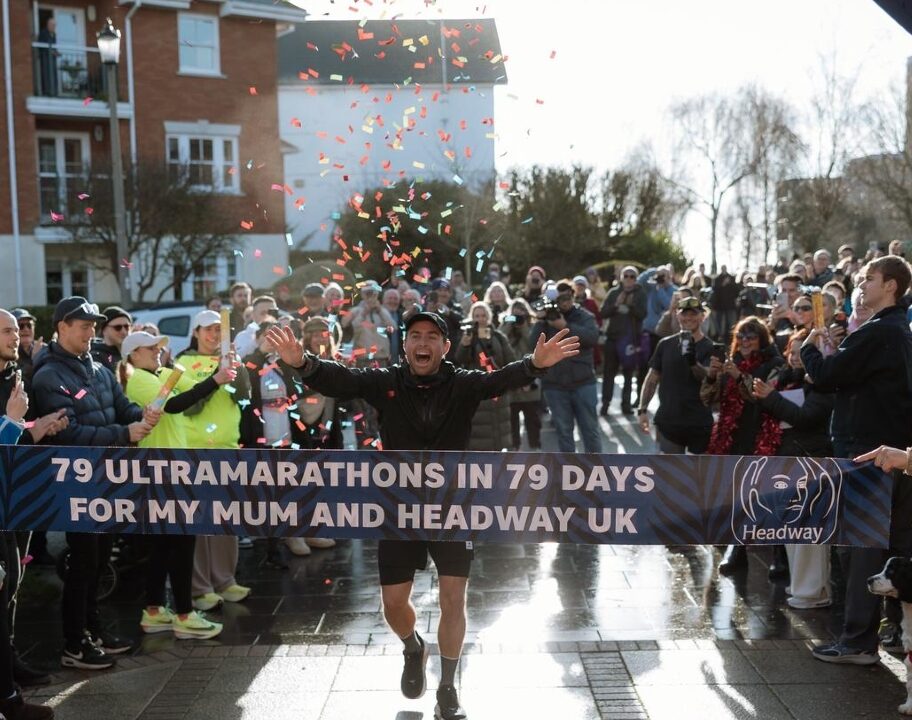James Nobles is a public health researcher by day, a runner in the morning, and a dad all the time!
But the Team Montane athlete isn’t just any runner – he won the Montane Dragon’s Back in 2022 and then the Northern Traverse last year.
And earlier this year he took on the Montane Winter Spine, his biggest challenge to date and in the first part of our interview we heard how he’d relished being part of the front pack, though that only made his untimely exit around halfway because of injury all the more frustrating.
Nutrition and sleep challenges
Reflecting now on key areas such as nutrition, sleep and gear he’s confident he can take some key learnings into next year’s race: He told us: “It was the first long one I’d done in winter. The weather was probably my main concern going into the race, however the forecast in the lead up to the race showed that we were in for some exceptional and ideal – albeit cold – weather! So, no complaints whatsoever on that front.
“I had two main issues though on the race which I will certainly learn from. I took way too much food and didn’t have enough variety either. Probably about 120 miles in, I was getting seriously fed up with eating the food that I had, and I was also getting some quite annoying blisters in my mouth from the very sweet and then very sour food!
“So big learning there, less Haribo Tangfastics and salt and vinegar crisps, and more savoury variety overall!

“The other big issue was sleep. I’d researched how other people have managed sleep on the Montane Winter Spine and took their lead, but that strategy just didn’t work for me – I had 25 minutes sleep before I dropped out in Garrigil, but I think I needed more and that I would have moved better for it too. Next year, I’ll have a longer sleep at Langdon Beck which will hopefully give me more energy to get through to Bellingham.”
‘Different events’
Asked if it felt like a significant step up after his Dragon’s Back and Northern Traverse victories, he said: “In some ways it does, but it is the challenge that I am looking for rather than a step up.
“The Dragon’s Back is tough in so many ways and has a lot more climbing and is quicker than the Montane Winter Spine, so they are just different events. The big step up with the Montane Winter Spine is the continuous nature of it.
“Other than doing more of these events, it’s a really difficult thing to train for, particularly the sleep deprivation side of things. I am however going to do the Montane Summer Spine Challenger North this summer to try and improve on the sleep front, and all being well, that will carry through into the Montane Winter Spine race.”
He’s now been right in the mix – and winning – most of the ultra events he’s entered in the last couple of years, but does that raise expectations?
“It does but I do try not to think about it too much, I just love having the opportunity to test out my body in these races and see how it does in contrast to those I am competing against.
I think the mental aspect for me is just as appealing as the physical side of things too, and that is where I probably feel most confident.
“It also helps enormously having the support from Montane, as they provide such incredible gear for these types of events. The Montane Winter Spine Race is probably one of the most testing events from that perspective, and all the kit I had performed exceptionally well.”
Juggling act
James’ enthusiasm for a return to the Montane Winter Spine is obvious and it’s clear the preparation for 2025 is already well under way – but what else is on the bucket list?
“I’d love to do some of the long-distance races in the Alps or the Dolomites, so perhaps something like the Tor des Geants, the Ultra Tour Monte Rosa, or the Lavaredo Ultra Trail.
“It’s just a big old juggling act with everything else that I have on family and work wise, so I typically set my sights on one big event per year and then a couple of smaller ones around it. I’d also love to have another dabble at the Bob Graham Round and perhaps look at the Wainwrights round in a few years.”
Most runners will have family and work lives to fit their running around, but how does James schedule his training for some of the most epic events in the calendar?
“Ah yeah, this is probably the most difficult part. I’m really lucky in that I work from home which gives me time in the morning to get out and train. I typically get up just after 6am and aim to be out of the door by 6.30am, then at the desk by 9am. So that’s my window of time to train usually and I can do quite a lot with that.
“It definitely gets more difficult in the couple of months before the main event when I try and ramp up the volume and strength training, which means two to three sessions a day, but I just fit the extra sessions around family life. So, I go to the gym once our daughter is in bed or after making tea.
“I couldn’t do all of this though without my wife – running is a massive part of both our lives, and so we prioritise making time for each other to train, that helps massively.”







